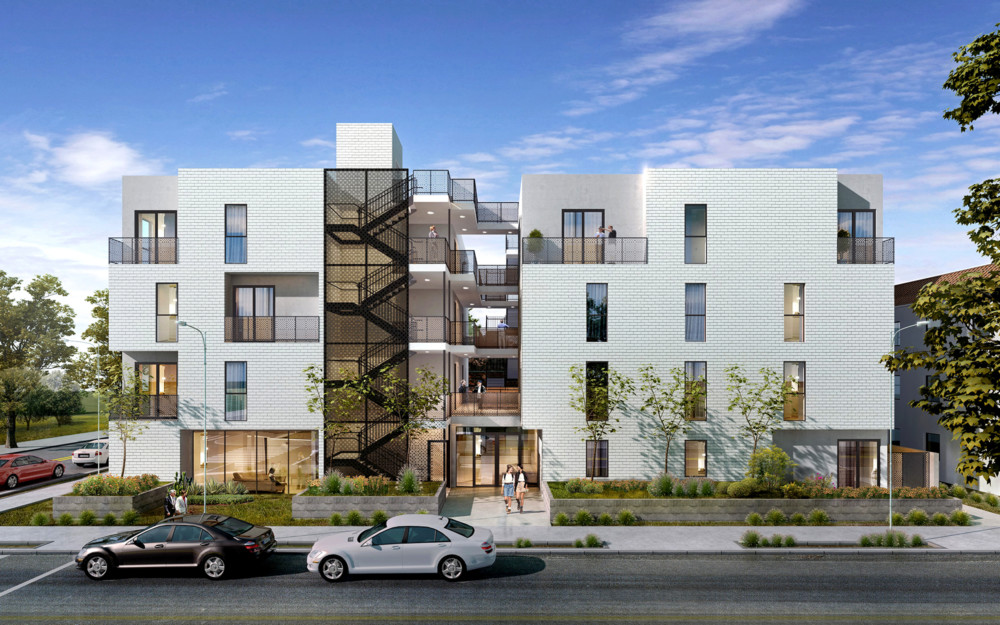By Roger Vincent
Los Angeles Times
WWR Article Summary (tl;dr) At “Common Melrose”, a co-living space in Hollywood, monthly rent of $1,550 includes utilities, wi-fi and housekeeping services to keep the common areas clean.
LOS ANGELES
Co-living is one the newest trends in urban housing, and it has prompted a New York operator to join with a Los Angeles developer to create $100 million worth of shared, furnished apartments to help meet a projected deep demand in Southern California.
Residents in a co-living complex typically have their own bedroom and bathroom but share kitchens, living rooms and other common areas with fellow tenants.
It’s a small but growing segment of the apartment market, mostly serving young professionals who can’t afford the rent in hip, desirable neighborhoods.
New York-based co-living operator Common and its Los Angeles partner Proper Development tested the waters in Los Angeles with a 24-unit complex on Melrose Avenue completed in November that got 9,000 applications from would-be tenants, Common founder Brad Hargreaves said.
“We see huge demand in Los Angeles,” Hargreaves said, for shared furnished apartments that rent for $1,300 to $1,800 per month.
At Common Melrose in Hollywood, monthly rent of $1,550 includes utilities, wi-fi and housekeeping services to keep the common areas clean.
When the costs of such services are included in price comparisons, units at Common properties can be rented for 20 percent less than competing new studio-style units nearby, according to Hargreaves.
Proper Development will build seven co-living apartment buildings over the next two or three years that Common will operate with a combined total of 600 beds, he said. The beds are full or queen, he added. “No bunk beds here. Everyone gets their own room.”
The companies are planning projects in Mar Vista, Echo Park, Koreatown, Larchmont and Playa Vista, he said.
“The urgency to develop market rate housing at accessible price points is tremendous,” said Daniel Pourbaba, founder of Proper Development.
buy kamagra gold generic buy kamagra gold online no prescription
The units are meant to serve people who are making about $40,000 to $80,000 per year. The median age of Common tenants is 29, Hargreaves said, “which is a little bit older than most people expect.”
That’s because demand extends beyond millennials early in their careers, he said. Tenants include empty-nesters in their 60s.
Formal co-living complexes, in some ways a new take on old-fashioned boarding houses, are still a novelty in Southern California but stand to emerge as a new property category, like assisting living complexes designed to serve the growing numbers of wealthy seniors.
A portfolio of buildings in an established property class can get funded by banks, purchased by pension funds and even securitized in real estate investment trusts.
Justin Mateen, co-founder of dating app Tinder, has invested more than $25 million in Proper Development’s co-living projects over the last few years through his Beverly Hills real estate company JAM Capital Real Estate and plans to double that investment figure this year.
“Multifamily development has been slow to adapt to the needs of modern renters, but now that lenders are increasingly recognizing co-living as an attractive asset class we are seeing an influx of institutional capital entering the market looking to co-invest with us,” Mateen said.
Co-living competitors in the Los Angeles area include Starcity, which operates a recently opened complex near Marina del Rey built by California Landmark Group, and co-living company Node, which operates newly renovated bungalow court apartments in Echo Park.
Starcity is based in San Franciso. Node is headquartered in London and has properties in multiple countries.
“Common is making a major commitment to Los Angeles,” Hargreaves said, “which is on track be our second biggest market after New York.”














































































































































































































































































































































































